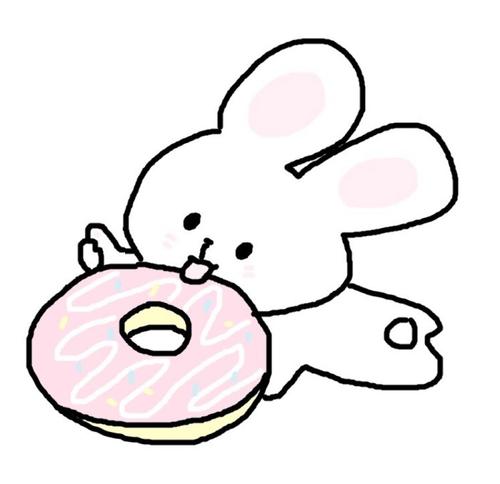“sp offer”是什么意思?
 反因
反因 内丹
内丹
“sp offer”全称为“ special offer"意思是:特殊报价,特价优待。special英 [ˈspeʃl] 美 [ˈspɛʃəl] adj.特殊的;专用的;专门的;重要的n.专车;特价;特刊;特约稿复数: specials 比较级: more special 最高级: most special1、Ask about special offers on our new 2-week holidays. 请垂询我们新推出的特价两周假日游。2、Today's special offer gives you a choice of three destinations今天推出的特价线路有3个目的地可供选择。3、To take advantage of our special offer, simply fill in the coupon and send it to us. 要得到我们的优惠,只需填写这份优惠表格并把它寄回给我们。扩展资料:special近义词exceptional英 [ɪkˈsepʃənl] 美 [ɪkˈsɛpʃənəl] adj.例外的;杰出的;优越的;独特的n.超常的学生1、His translation is exceptional in its poetic quality. 他的译作非常有诗意。2、School governors have the discretion to allow parents to withdraw pupils in exceptional circumstances. 学校管理者有权允许家长们在特殊情况下让学生退学。3、She's a woman of exceptional intelligence. 她是个有着非凡智慧的女子。
MPA.MPP.MPM区别
 而无阿私
而无阿私 佛陀
佛陀
MPA主要攻管理类,MPP范围稍微广泛点,而MPM主要是在经济管理方面1、MPA 是公共管理硕士(Master of Public Administration) 专业学位的英文简称, 是以公共管理学科及其他相关学科为基础的研究生教育项目, 其目的是为政府部门及非政府公共机构培养高层次、应用型专门人才。2、MPP主要是指公共政策专业硕士(Master of Public Policy)。在国外,也有把MPP称作为Master's in Policy或Master's Degree in Public Policy,还有称作MP(Master of Policy)的,作为一项学位教育,国外一般对MPP作出了这样的定位:一项研究生水平层次的职业导向型的学位教育,主要面向那些希望在公共部门、非营利组织以及与公共政策相关的组织中谋求职业生涯的学生,为学生提供公共政策的基础理论和方法论的技能、从地方到全球范围的公共政策现状以及社会政治、经济、文化、环境等各领域的政策图景,培养学生运用政策工具、管理政策过程、实施政策分析的能力。通过对国外MPP教育的考察,可以得出这样的结论:在国外,公共政策专业硕士已经成为一项成熟的专业学位教育项目,几乎所有的发达国家都设立了这样一项学位教育,而且在经过这一学位教育的人才正在公共领域中的各个部门发挥着重要作用。MPP教育已经在绝大多数国家和地区得到了认可,并被纳入到正式的高等职业教育之列,与MBA、MPA并称教育领域三大专业硕士学位。3、MPM(项目管理硕士)与MBA齐名,是当今世界上最令人垂青的学位证书。美国著名的《时代》杂志把项目管理评为二十一世纪最具“钱”景的"黄金职业"。现代项目管理集管理科学之大成,从根本上革新了管理技术和方法。项目管理视管理的核心问题为项目的运作,通过项目管理的时间管理、范围管理、投资管理、风险管理、规划管理、以及工作团队的运作,有效地整合人力、财力、物力、信息、科学技术和市场等资源,从根本上改变了传统管理的概念、架构和功能,创新了管理人员的工作流程和思维方式,提升了企业核心竞争力。
外国人在清华大学怎么留学
 黄宗
黄宗 官事不治
官事不治
外国人可以直接与清华大学的外国留学生办公室联系。清华大学目前有40个院系的100个硕士专业和82个博士专业招收外国留学生,其中有14个全英文硕士学位项目及1个全英文博士学位项目(招生院系和专业请见专业目录)。外国人申请清华大学的申请方式:第一步:网上申请 通过清华大学外国留学生工作办公室网站进行在线申请(SSP、MBA、GMBA及FMBA项目申请者除外),选择“硕士研究生项目”或“博士研究生项目”,提交所需申请信息,待申请状态和上传照片变为“审核通过”时,打印出系统自动生成的《清华大学外国留学生研究生项目申请表》,由申请者本人签名,贴上2寸近期照片。 申请经济管理学院工商管理硕士项目(MBA,GMBA);申请五道口金融学院清华-康奈尔双学位工商管理(金融方向)硕士项目(FMBA); 申请苏世民学者项目;第二步:提交申请材料 中文授课项目 中文授课项目申请者,请将以下申请材料上传至在线申请系统(上传文件的格式要求参见系统说明): (1) 个人陈述,博士学位申请者另需提供简要的研究经历。 (2) 学位证明(或预毕业证明,获得学位证书后需补交)。 硕士项目申请者,须提交学士学位证明;博士项目申请者,须提交硕士学位证明及学士学位证明。 (3) 成绩单。 硕士项目申请者,须提交本科期间完整的成绩单;博士项目申请者,须提交硕士及本科期间完整的成绩单。 (4) HSK成绩证明(经申请获准者,可免)。 (5) 二位副教授或相应职称以上的学者的推荐信(需写明推荐人电话及email地址)。 (6) 申请者个人普通护照(个人信息页)。 (7) 申请经济管理学院或五道口金融学院者提交GRE或GMAT成绩证明。申请经济管理学院工商管理专业(清华大学-哥伦比亚大学商务分析硕士双学位项目),需提供附加材料。全英文授课项目 全英文授课项目申请者,请直接将申请材料提交至相关院系,申请材料要求见各项目介绍。第三步:缴纳申请费 申请者可通过以下两种方式缴纳申请费600元人民币: (1) 使用信用卡进行网上支付。申请者收到网付订单电子邮件后,按邮件要求在申请系统“我的申请”列表中查看需缴纳申请费的申请项目,点击支付按钮后可见系统接受的信用卡类型,即可按照系统提示进行网上支付; (2) 本人或委托他人到清华大学外国留学生工作办公室(紫荆22号楼120室)缴纳。 第四步:提交申请材料原件被预录取者,需在 2016年5月31日前提交申请者本人签字的《清华大学外国留学生研究生项目申请表》原件(贴2寸近期照片)以及申请材料中(1)~(7)项材料原件。提示:各种证明、证书须是中文或英文的原件或公证件。学位证明和成绩单原件必须由毕业学校官方密封,公证件须由公证部门官方密封。原件或公证件将由我校作为学生档案保存,不予退还。应届毕业生可在报到注册时补交学位证和成绩单原件或公证件。提供材料不合格者,不予正式录取。申请材料恕不退还。
广东外语大学南国商学院是专科院校吗
 一两
一两 外丹
外丹
广东外语外贸大学南国商学院(Guangdong University of Foreign Studies South China Business College)坐落在广东省广州市白云区;是一所由广东外语外贸大学举办、国家教育部批准成立的本科层次的独立学院 。学校目前设有英语语言文化学院、东方语言文化学院、西方语言文化学院、国际经济与金融学院、国际工商管理学院、中国语言文化学院、信息科学技术学院、大学英语教学部、思想政治理论课教学部、公共课教学部等10个学院(部),共开设英语、商务英语、翻译、日语、阿拉伯语、朝鲜语、法语、德语、西班牙语、俄语、葡萄牙语、国际经济与贸易、电子商务、国际商务、金融学、经济学、投资学、税收学、经济统计学、会计学、物流管理、市场营销、旅游管理、财务管理、会展经济与管理、人力资源管理、酒店管理、汉语言文学、汉语国际教育、应用语言学、计算机科学与技术、数字媒体技术、软件工程等33个本科专业,分属文学、经济学、管理学、工学等4个学科门类,现有在校学生近万人。学校具有副高以上专业技术职务的教师占教师总数的40.88%,具有博士研究生学历的教师占教师总数的18.87%,硕士及以上学位教师占教师总数的80.19%,24.84%的教师毕业于国外(境外)高等学府,师资力量雄厚位居全省同类院校前列。http://ke..com/link?url=fcj5tzXPDzur8gqaAWD6CT-v4CHD53R5cqX7R5agTj_XJl-IWS-3GD5yIkqrTToSCCMLSoTNL2AK2LV1_heofSJeWOuIZGwJ92rvdokR17vEAKYgmUE-gd-MN1y53W4T0-KN03eIJ1xe_y5ivq-PuXoSh2h3yGhZsSpPVldwQzCRF_v_84cGyp74AgkKuMYHh1mohfrM_El53hjcMuimXq
中国最早进行基因研究的是哪个单位?什么时候?
 中国龙
中国龙 五材
五材
中国科学院国家基因研究中心成立于 1992 年 , 由中华人民共和国科学技术部、中国科学院、上海市人民政府共同支持建立。 中心从 1993 年就开始以中国主要栽培品种籼稻广陆矮 4 号( Oryza sativa ssp indica cv Guangluai 4 )为水稻基因组研究品系,进行基因组研究,并先后取得了一系列学术成果。中国科学院北京基因组研究所(以下简称“基因组所”)于2003年11月28日正式批准成立,是国家生命科学基础研究所。现任所长为吴仲义院士。目前研究所的科研、支撑、管理人员共计237人,其中中研院院士1人,研究员19人,百人计划10人,现有在读博士、硕士研究生188人,博士后3人。
美女们,帅哥们!谁有六年级寒假生活指导答案啊~ 要全部的! 跪求啊~ 急! 急! 需!需! 啊啊啊啊啊!
 成心
成心 沙撒
沙撒
7页: 3.诺 忠 婉 赠 前 8页; 5.译:当该用而的时候而不用而,当不该用而的时候却偏偏用而,从今而后,算了算了吧 6.雪尽马蹄轻 大雪满弓刀 孤舟蓑笠翁,独钓寒江雪 柴门闻犬吠,风雪夜归人 忽如一夜春风来,千树万树梨花开 7.秦(二,大,二,小,合为秦) 此(“些”短一,短一,剩下“此”) 石榴(“岩”移走‘山’,‘田’植上‘柳’,是石榴) 石榴(会意) 后内容见以后再写 8页: 7题(2) 许 古 谢 岳 帅(或师) 鲁 秋 (3)要拿茶,人上草,人下木,即茶 12页: 惊动了府上的尊鼠,令尊是对别人父亲的尊称,他说尊鼠,正是骂朋友的爸爸是老鼠。 55页: 山东名人/ 晏婴(?~前550)字平仲,夷维(今山东高密)人。春秋时期政治家、思想家。传世《晏子春秋》一书,系战国时人搜集有关他的言行编辑而成。 孔子(前551~前479)名丘,字仲尼。鲁国陬邑(今山东曲阜东南)人。春秋末期思想家、政治家、教育家,儒家学派创始人。被后世统治者尊为“至圣先师”。 颜子(前521~前490)春秋末年鲁国人,孔子最赏识的弟子。名回,字子渊,品行卓冠群科。早卒,孔子极悲恸。后被封建统治者尊为“复圣”。 孙武 字长卿。齐国人。春秋末期军事家。其著作《孙子兵法》,是我国杰出的兵书。 左丘明 鲁国人。春秋末期史学家。相传曾著《左传》,又传《国语》亦出其手。 曾子(前505~约前432)名参,字子舆,孔子弟子。春秋末鲁国南武城人,被后世统治者尊为“宗圣”。相传著有《孝经》和《大学》。 鲁班 公输氏,名般,亦作班、盘,春秋时鲁国人。我国古代著名建筑工匠,后世建筑工匠、木匠尊为“祖师”。 墨子 (约前468~前376)名翟。古小邾国(今滕州市)人。春秋战国之际思想家、政治家,墨家的创始人。现存《墨子》五十三篇。 吴起(?~前381)卫国左氏(今山东定陶西)人。战国时军事家。现存《吴子》六篇。 孙膑(约前380~前320)生于齐国阿鄄之间。孙武的后代。战国时军事家。著作有《孙膑兵法》。 扁鹊 姓秦,名越人。齐国渤海卢(今山东长清)人。战国时医学家。 孟子(约前372~前289)名轲,字子舆。邹(今山东邹城)人。战国时思想家、政治家、教育家。著作有《孟子》。被后世统治者尊为“亚圣”。 庄子(约前369~前286)名周,宋国蒙人。著名思想家和文学家,道家的代表人物。有《庄子》一书传世。 荀子(约前313~前230)名况。赵国人,一生在山东地区活动,今苍山兰陵镇东南有荀子墓。战国时期思想家、教育家。著有《荀子》一书。 仓公(约前205~?)姓淳于,名意,齐临淄人。汉初医学家,首创医案(病历)。 汜胜之 汜水(今曹县)人。西汉农学家。撰有农学著作《汜胜之书》。 郑玄(127~200)字康成。北海高密(今属山东)人。遍注群经,是汉代经学的集大成者。 王弼(226~249)山阳高平(今山东邹城一带)人。三国魏玄学家,好谈儒道,辞才逸辩,开魏晋玄学清谈之风。著作有《周易注》《周易略例》《老子注》《老子指略》,对中国古典哲学影响甚远。 王叔和 名熙,高平(今山东邹城一带)人。魏晋间医学家。编有《脉经》10卷。 诸葛亮(181~234)字孔明。琅琊阳都(今山东沂南)人。三国蜀汉政治家、军事家。著作有《诸葛亮集》。 王羲之(303~361)字逸少,琅琊临沂人。东晋大书法家,被誉为“书圣”。真迹无存。 王献之(344~386)字子敬。原籍琅琊临沂(今属山东)。王羲之第七子。东晋书法家,存世墨迹有行书《鸭头丸贴》,小楷刻本有《十三行》。 刘勰(约465~约532)字彦和,原籍东莞莒县(今属山东)。南朝梁文学理论批评家。著有《文心雕龙》五十篇。 贾思勰 益都(治在今寿光)人。北魏农学家。著有农学名著《齐民要术》。 刘晏(718~780)字士安,曹州南华(今山东东明)人。唐理财家。 颜真卿(709~785)字清臣。祖籍琅琊临沂(今临沂市)。唐大臣、著名书法家。传世名作甚多,有《多宝塔碑》《颜氏家庙碑》《祭侄稿》等。 李清照(约1084~1151)号易安居士,齐州章丘(今属山东章丘)人。南宋女词人。《易安居士文集》《易安词》均已散佚。后人辑有《漱玉词》。今人辑有《李清照集》。 辛弃疾(1140~1207)字幼安,号稼轩,历城(今山东济南)人。南宋词人。著有《稼轩词》。 王祯 字伯善,山东东平人。元代农学家及活版印刷术的改进者。有《农书》传世,是中国古代四大农书之一。 戚继光(1528~1588)字元敬,号南塘,晚号孟诸,山东登州(今蓬莱)人。明抗倭名将、军事家。著有《纪效新书》《练兵实纪》《止止堂集》。 王士禛(1634~1711)字子真,一字贻上,号阮亭,又号渔洋山人,山东新城(今桓台)人。死后避雍正讳,改称士正、士祯。清诗人,论诗创神韵说,生前门生众多,影响很大。著作有《带经堂集》等,又自选其诗为《渔洋山人精华录》,另有《居易录》《池北偶谈》等多种笔记。 蒲松龄(1640~1715)字留仙,一字剑臣,别号柳泉居士,世称聊斋先生,山东淄川人。清文学家。著有《聊斋志异》等。 孔尚任(1648~1718)字聘之、季重,号东塘、岸堂、云亭山人,山东曲阜人。清戏曲作家,著有《桃花扇》等。 王懿荣(1845~1900)字正孺,又字廉生,烟台福山区古现村人。八国联军侵华时,为京师团练大臣,以身殉国。清末著名文学家、金石学家、书法家,是甲骨文的发现者。 东方朔(前154-前93)字曼倩,平原厌次(今山东德州陵县)人原滨州地芪惠民县人,生于公元前154年,是四队时期著名的义学家和官员。汉武帝时被任命为太巾大夫,常伴帝王左右。东方朔性格开朗,爱说笑话爱逗唯,被相声艺人尊为本行当的“祖师爷”。 王尽美(1898~1925)原名王瑞俊,字灼斋,山东莒县北杏村(今属诸城)人。是中国共产党创始人之一和山东党组织的最早组织、领导者。 丁肇中,诺贝尔物理学奖获得者,世界著名高能物理学家。 祖籍 日照市东港区涛锥镇。l936年 2月27日生于美国密执安州。其父丁观海,是 一位有着强烈正义感的爱国人士。1925年在 济南求学期间,受共产党人邓恩铭等的影响, 积极参加进步活动,并与同乡安哲、牟春霆 (陈雷)、李平章、郑天九等人,成立了中 国共产党的外围组织“少年日照学会”。 李典(174--209) 三国曹操部将。字曼成,山阳巨野(今巨野东北)人。初招集宗族宾客数千家,归附曹操。由于参加镇压黄巾军和同袁绍作战有功,授青州刺史。后任中郎将、离孤太守。官渡之战,率领家族部曲运送谷帛以供军需。袁绍失败,任裨将军,迁捕虏将军,与张辽、乐进屯兵合肥,击破孙权围攻。性好学、贵儒雅、 不争功,受到将士尊敬。 管仲是春秋时期的大政治家。他处的时代正是列国并峙,互相征战不休。当时在黄河下游比较活跃的大国有齐、鲁、郑、宋、卫;小国有邢、遂、谭、纪、杞。大国又分两派,一派是郑、齐、鲁,一派是宋、卫。小国也附属在各个大国一边。两派的力量以郑、齐、鲁为强。由于郑国发生内乱,渐渐中衰,齐国慢慢强大,逐渐成了各国的霸主。 舜 传说中的父系氏族社会后期部落联盟首领,中国历史传说中的古帝王(五帝)之一。传称号有虞氏,姓姚,名重华,字都君,谥日“舜”。因国名“虞”,故又称虞舜。东夷之人(一说冀州之人),生于姚丘(一说生于诸冯,即今山东诸城)。 诸葛瑾(174-241) 三国孙权主要谋士之一。子子瑜,琅邪阳都(今沂南南)人。诸葛亮之兄。汉末避乱江南。后为孙权所用,与鲁肃等并为谋士,并为孙权长史,转中司马。207年,受孙权派遣通好刘备,并曾会见其弟诸葛亮,各为其主,秉公无私。在内政方面为孙权出谋划策,进谏意见,常被孙权所接受,深得信任。又随孙权伐蜀。讨关羽时,封宣城侯,以绥南将军代吕蒙领南郡太守。官至左将军。谥封宛陵侯。 刘表(142-208) 东汉末官吏。字景升,山阳高平(今邹城西南)人。东汉皇族远支。少年有名,号称“八俊”。190年,任荆州牧。割据今湖南、湖北一带。对中原军阀混战,取观望态度。官渡战前,袁绍派人求助,阳为应许,阴守中立,静观时变,因此所据地区破坏较少,中原人前来避难者甚多。后病死。陈寿批评他"外宽内 忌,好谋无决,有才而不能用,闻喜而不纳。" 张海迪,女, 1955 年生于济南,汉族,哲学硕士,中共党员,山东省创作协会一级作家,九届、十届全国政协委员,中国残疾人联合会副主席,中国作家协会全国委员会委员,山东省作家协会副主席。 刘墉(1719-1805) 清前期大臣兼书法家。字崇如,号石庵,诸城人。东阁大学士、军机大臣刘统勋之子。乾隆十六年(1751)进士,改翰林庶吉士,3年后授翰林编修。迁詹事府右春坊右中允,升翰林侍讲。任广西乡试正考官。寻提督安徽学政,调江苏。二十七年(1762),授山西太原府知府。秩满,擢冀宁道参政。历江宁府(今南京市)知府、江西盐驿道参政、陕西按察使。四十一年(1776),擢内阁学士,任南书房行走。明年,提督江苏学政,升吏部右侍郎。迁湖南巡抚。莅任年余,勘修城垣,革除陋习,抚恤灾民,筹采峒硝,颇有治绩。升都察院左都御史,署吏部尚书。继任工部尚书。四十八年(1783),由署直隶总督调吏部尚书。明年,兼署兵部尚书,又授协办大学士。嘉庆二年(1797),升体仁阁大学士。死后赠太子太保,入祀贤良祠,谥"文清"。外娴政术,内通掌故,博通经史,长于古文考辨。曾三次兼署国子监,数任乡试、会试正考官。先后任四库馆、玉牒馆副总裁,三通馆、会典馆正总裁。又筹办过编撰《西域图志》和《日下旧闻考》。能诗赋,擅题跋。尤长于书法,其书貌丰骨劲,味厚神藏,有"棉里裹针"之妙。与翁方纲、梁同书、王文治齐名,为当时四大书法家之一。 杨子 (1917--1947) 战斗英雄。原名宗贵,字子荣。牟平人。1929年随父迁往安东(今丹东)谋生,12岁进缫丝厂当童工,后被日本人抓去当劳工,1943年逃回家乡,参加了民兵。1945年秋参加八路军胶东海军支队。同年10月随部队挺进东北,并加入中国共产党。1946年任牡庙丹江军区二团三营七连一排班长、侦察排长。1946年3月在消灭李开江匪部的战斗中立功,被评为"团战斗模范"。1947年2月在搜剿惯匪"座山雕"张洛山的战斗中,化装打入匪穴,里应外合,彻底消灭了这股土匪,并活捉匪首"座山雕",荣立三等功。同年2月23日,在海林北部闹枝子沟追剿"郑三炮"、"孟老三"等残匪的战斗中,英勇牺牲 秦琼 ?--638) 唐初名将。字叔宝,齐州历城(今济南)人。 初为隋将来护儿"帐内",后从张须陀镇压卢明月、李密等起义军。须陀死,率兵归裴仁基,后又降李密,任帐内骠骑。至李密败,归王世充。最后降唐,任兵马总管。不久授秦王右三统军,随李世民击败宋金刚、王世充、窦建德等起义军,封翼国公。参与"玄武门之变",官至左武卫大将军。638年卒,赠徐州都督,陪葬昭陵,改封胡国公。 孔融 153~208),东汉文学家。字文举。鲁国(今山东曲阜)人。灵帝时,辟司徒杨赐府。中平初(185),举高第,为侍御史,与中丞不合,托病辞归。后辟司空府为僚属,拜中军候,迁虎贲中郎将。献帝初平元年(190),因忤董卓,转为议郎,出至黄巾军最盛的青州北海郡为相。兴平二年(195),刘备表荐他领青州刺史。建安元年(196),袁绍之子袁谭攻青州,孔融只身出奔,妻子被俘。曹操迁献帝都许昌,征孔融为将作大匠,迁少府。在许昌,不满曹操雄诈,多所乖忤,被奏免官。后复拜太中大夫,退居闲职,好士待客,座上客满,奖掖推荐,声望甚高。终为曹操所忌,枉状构罪,下狱弃市。 祢衡 (173~198) 汉末辞赋家。字正平。平原般(今山东临邑)人。少有才辩,性格刚毅傲慢,好侮慢权贵。因拒绝曹操召见,操怀忿,因其有才名,不欲杀之,罚作鼓史,祢衡则当众裸身击鼓,反辱曹操。曹操怒,欲借人手杀之,因遣送与荆州牧刘表。仍不合,又被刘表转送与江夏太守黄祖。后因冒犯黄祖,终被杀。 王粲 17 - 217)汉末文学家,“建安七子”之一。字仲宣,山阳高平(今山东邹县西南)人。少年便负才名,深得著名诗人蔡邕的赏识。17岁因避战乱,到荆州依附刘表,历15年未受重用。刘表死,归依曹操,被任命为丞相掾,赐爵关内侯,转迁军谋祭酒,官至魏国侍中。建安二十一年(216)随军征吴,翌年于途中病故。 齐鲁楹联 李清照 李苦禅 李清照 匡衡 戚继光 59页: 新疆木卡姆演奏乐器:第1、2、4个,圆号和萨克斯管是西洋乐。 60页: 制作孔明灯:一、材料 竹篾、白纸、细铁丝、酒精、脱脂棉、浆糊。 二、制作方法 1、用3张薄白纸糊成一个顶端密封的圆柱体,其周长为225cm,高约90cm。 2、用宽1cm,厚0.1cm的竹蔑扎一个周长约220cm的圆圈,其下底拴2根互相垂直的细铁丝。 3、将竹圈放在圆柱体下端作底,使两者边沿近于重合,用浆糊粘住。 4、用竹蔑扎一个小圆圈,直径约15cm,周围包上脱脂棉约10g,作为燃心,然后挂在两铁丝的交叉点上。 好了,这些资料愿大家喜欢! 第47页: 窗花 寓意着寄托辞旧迎新、接福纳祥的愿望. 剪纸作品由于是在纸上剪出或刻出的,因此必须采取镂空的办法,由于镂空,就形成了阳纹的剪纸必须线线相连,阴纹的剪纸必须线线相断,如果把一部分的线条剪断了,就会使整张剪纸支离破碎,形不成画面。由此就产生了千刻不落,万剪不断的结构。这是剪纸艺术的一个重要特点。剪纸很讲究线条,因为剪纸的画面就是由线条构成的。根据实践经验把剪纸的线条归纳为五个字:“圆、尖、方、缺、线”。要求达到:“圆如秋月、尖如麦芒、方如青砖、缺如锯齿、线如胡须。”可以说线条是剪纸造型的基础。 中国的剪纸起源于汉至南北朝时期已相当精熟然而真正繁盛却是在清朝中期以后。古老的剪纸多在乡间,以剪刀铰出为主,趣味浑朴天然,都是出自农家妇女之手;剪纸进入城市后,不仅市民情趣和生活理想要参入剪纸艺术,而千家万户拥挤在一起,相郊成习,需要颇巨;剪纸艺人为了省工,一刀多张便改为刻刀雕刻为主,风格转向精巧,艺人也就不止于妇女了。然而,时代更迭生活改变和审美转化,传统民间艺术渐渐不能适应现实需要,所以现代新兴剪纸艺术孕育而生。 对联 春联讲究左右对仗,句式工整,压韵,取义吉祥,上下联和谐,横批总领.一般用红色做底色,如果家中有人去世,当年用白色,第二年蓝色,第三年黄色,来年又是红色. 第36页; 二、1、国家一级保护植物 1、伯乐树(钟萼木)Bretschneidera sinensis 2、红豆杉Taxus chinensis 3、南方红豆杉Taxus mairei 国家二级保护植物 1、樟(香樟)Cinnamomum camphora 2、香果树Emmemopterys henryi 3、金荞麦(野荞麦)Fagopyrum dibotrys 4、福建柏Fokienia hodginsii 5、野大豆Glycine soja 6、鹅掌楸Liriodendron chinese 7、厚朴Magnlia officinalis 8、凹叶厚朴Magnlia officinalis ssp.biloba 9、花榈木Ormosia henryi 10、红豆树Ormosia hosiei 11、闽楠Phoebe bournei 12、浙江楠Phoebe chekiangensis 13、蛛网萼Platycrater arguta 14、白豆杉Pseudotaxus chienii 15、华东黄杉Pseudotsuga gaussenii 16、毛红椿Toona cillata var.pubescens 17、榧树Torreya grandis 18、长叶榧树Torreya jachii 19、榉树Zelkova schneideriana 看看行不?不过我提醒你靠人不如靠自己!!!别做了,有嘛好做的
关于苏打绿的作文
 无己
无己 生生世世
生生世世
1、我喜欢听苏打绿的歌。 就这个乐队的音乐风格来说,是鲜明而独特的。在大街小巷上,只要随便一听,就可以辨认出播放的是否是苏打绿的歌。 主唱青峰拥有很好的才华,写的歌词细腻动人,而且他的唱腔一流,特别,善于把声音拉得细长而不让人感到冗长。其他成员各有所长,乐器种类繁多,比如鼓、贝斯、木吉他、电吉他、中提琴、钢琴、键盘、手风琴、六角型手风琴、吹奏键盘笛、拇指琴等,配搭起来十分完美且别具一格,听起来让人有一种新感受。 苏打绿的音乐让我感到自然知纯真。像《日光》、《简单生活》等。而《早点回家》想要表达的是在外工作的父母与留守乡村的孩子的感情,早点回家,是父母,也是孩子的盼望。《简单生活》让我感到岁月静好,世事无忧。可是有多少人能简单地生活呢? 《无眠》、《蝉想》、《交响梦》等常常在我听完后记不起它们的曲调,十分无奈。 《他夏了夏天》赞扬的是劳动的工人,为了家,他们辛勤工作。听这首歌,总让我想起父亲在工地上日晒雨淋的辛酸。 《小宇宙》描述的是世俗百态。他似乎想守住自己的小宇宙。这个“小宇宙”就是自己的心。我们每个人都要守护心中的净土啊! 《相信》,是一种自我的执着。 在情歌方面,《小情歌》最让我欣赏。它成了一种承诺:“你知道,就算大雨让这座城市颠倒,我会给你怀抱”。 …… 不过话说回来,也有人不喜欢苏打绿的歌,也许是觉得怪怪的吧。不过萝卜青菜,各有所爱罢了。2、苏打绿 喧嚷凡尘中的茉莉花茶 关于苏打绿,太多太多的话要讲。 他不出名,不想周董,jolin般出名,大红大紫。甚至某个较为受人关注的娱乐节目的主持人对着屏幕,对着众多歌迷,天真烂漫的说:“苏打绿是男是女啊?”我想说:苏打绿,五人团体组合,三人取得双学位,至于其中唯一一个女生,也在奋力考取硕士。主唱青峰,人如其名歌声如同银铃般回荡在山谷,经久不衰。 开始认识苏打绿,只是因为一首歌《小情歌》,从来没有听过这般的歌,明明是情歌,却不像其他的歌曲般铺天盖地的“你爱我,我不爱你、我爱你,你不爱我”之类的。这首歌对于爱情只有淡淡的略撇而已,竟会将爱描绘得如此简单,而且更类似于一种对爱人的感谢。青峰的声音很怪,他将著名的约德尔唱法融入到歌声中,不含一丝嘈杂,在夜里听他唱歌,声音飘荡在空气中,干净透彻。 苏打绿不经常唱情歌,自己写词,自己谱曲,的是给每首歌富于哲理。当我听见《这天》人完全被震惊了,原来人也可以用一种对生命反问对话生命。被生命痛伤,即便自己伤痕累累,却“用温柔包覆勇敢,给喘息的你笑脸······躲在你利刃之内,骄傲的自卑作祟”;听见《春·日光》,好想躺在巨大的草原上,风徐徐吹过,草儿都会跳舞;好像看见满地的玫瑰花,漫无目的得飘,令人心醉;好像摸到最柔软,最善良的心,自己都会不由自主地笑,连mv都是与台湾最最朴实的农民跳着可爱的舞蹈,透过叶子,能发现阳光折射下来的光变换着颜色,一切都那么美好,“美好是因为挑战无私的天真,罪恶是因为克服背叛的恐惧······美好是因为克服背叛的恐惧,美好是因为无视美好的逝去。”他静而无声的告诉着我们不要老是计较于人世间的烦扰,放宽了心,也许,身边的很多事物都很美好;听见《夏 狂热》,非常讽刺“在这个急于立碑的城市,谁比谁更无耻,干我什么事······长大后的我们,狡猾的修改过程,童年故事汗湿的脏手心,抓着,狂热。”这个不等同于《春·日光》,电吉他的声音完美的嵌合在青峰的嗓音中,更突显出写词人的烦躁。;听见《无与伦比的美丽》,深深地被写词人所震撼,苏打绿的歌也很怪,从来都不指出究竟在说些设么,而是给予人们的自由想象的空间,这首歌里是写给一个残疾人的,但并没有指出,在一个平等的基础上和他对话,不要觉得自己不如别人,“你若担心你不能飞,你有我的蝴蝶······我若担心我我不能飞,我有你的草原。” 有人说,苏打绿是这个新新社会最独特的一道风景线,他们是天使,带给人们最能触动人心的力量,他教给了人们许多许多人们知道却从没有重视的道理,而且也教给了人们不要事事看的都很重要,有舍才有得,就如《花茶》里所唱“花,一朵交织完美的花,变成半开枯萎的花 怎么插。花,与其凋谢换来一脸尴尬,不如趁早泡成一杯杏仁茶。”而且突然想到一个医生,名字已经淡忘,但是他的故事我一直记得:他非常有名,成为他的学生是每个医生最大的心愿,然而,除了医术,他却只教给他的学生三个道理:我进入每个房间,都只是为了人们生命而去;我不会轻易打开房间任何一样东西;我绝对不对病人或病人家属有任何言语呵斥。苏打绿就是在帮我们重温也是学习这一很容易被忘记的,最普通的道理。 苏打绿,谢谢你。谢谢你陪我走过这么多日子,在我无助时给我力量;在怅然失措时指引方向;在平凡中教给我最简单却也最深刻的道理。谢谢。
高中二年级,非谓语动词规则和这个语法好的记忆,学习方法。
 长濑
长濑 一画
一画
一、非谓语动词具有双重性: 1. 具有本身的动词特征: * 及物动词可以由有自己的宾语; * 可以由状语来修饰; * 有时态和语态的变化 2. 在句子中起相当于名词、形容词或副词的语法作用 二、非谓语动词的词类属性及其语法功能 1. 不定式 1)名词性,在句子中可以用作主语、宾语及说明主语属性的表语。 * 主语:To talk with him is a great pleasure. 和他谈话是一件非常愉快的事。 注意:作主语可以用形式宾语表示——It is a great pleasure to talk with him * 表语:Her job is take care of the chilgren and wash clothes. 她的工作是照看小孩和洗衣服。 * 宾语:She decided to try again. 他决定再试一次。 注意:做宾语是学习不定式的重点,应该掌握可以带有不定式宾语的一些特定动词,如意念动词 want, wish, decide, help, pledge 必须跟不定式,begin, start, like 和 forget,remember, regret, need 等动词跟不定式宾语的特殊含义。 2)形容词性,在句子中可以用作定语和形容词补足语(也有人称作原因状语)。 * 定语: He is always the first one to get up. 他总是第一个起床的人。 I have a few wirds to say. 我有几句话要说。 * 用在 be + 情感形容词后,如: She is ready to help us. 他愿意帮助我们。 They are anxious to learn to do something important. 他们渴望做一些重要事情。 3)副词性,在句子中可以用作目的和结果状语。 * 目的状语: You must come to see me on Sunday. Early in 2000 he went abroad to studay. 注意: 要掌握 in order to 和 so as to 用法。 * 结果状语: A few years later he came home to find that his hometown had already changed. 注意:要掌握 so...as to, too...to 和 ...enough to 的用法。 2. 动名词:具有名词性,可以用作主语、宾语和表语 * 主语: Talking is easy. 仅凭嘴说是容易的。 It is no use crying over spilt milk. 吃后悔药是没用的。 注意:如果表语是名词 no use, no good, no help 或形容词 useful, useless, helpful 等,一定要用动名词短语作主语(不能用不定式) * 宾语: 直接宾语:Please stop talking. 注意:必须熟记必须跟动名词作宾语的特定动词,如 mind,imagine, finsh,consider, suggest,can't help 等,以及在某些动词后动名词和不定式作宾语的区别(见不定式)。 短语动词(动词+小品副词)后必须用动名词作宾语,如:give up 放弃, put off推迟,dally over 延误等。 介词后必须用动名词作宾语。 * 表语: Her favourite occupation is reading. 他最喜欢的是读书。 注意:与进行时态的区别,进行时态主语由有行为能力的名词充当,动名词则是由无行为能力的名词充当。 3. 分词:具有形容词性和副词性 1)形容词性:用作定语、表语和宾语补足语 * 定语 前置定语: the working people 劳动人民。(people 是 working 的行为者) worn clothes 破旧衣服 (clothes 是被穿破的) 后置定语:相当于定语从句 The man carrying a big flag was a model worker. ( = The man who carried a big flag was a model worker.) That is a book written by a worker. (= That is a book that was written by a worker.) * 表语 现在分词作表语说明主语的特征:The story is interesting (故事的特征是有趣的) 过去分词作表语说明主语所呈现的状态:He is interested in the story. (他对故事呈现出感兴趣的状态) * 宾语补足语: 现在分词说明宾语当时执行的行为:I saw him coming.(他正过来) 过去分词说明宾语是分词涉及的对象:I must have my hair cut. (头发被别人剪掉) 2)副词性:用作状语 * 时间状语:相当于时间状语从句 Entering the dining room, he saw his mother in white clean overall. (= When he entered the diningroom, ) * 原因状语:相当于原因状语从句 Knowing that it was going to rain, he decided not to go out. (= Since he knew that it was going to rain) * 方式或伴随状语:相当于一个并列分句 Laughing and talking, the students went out to the fields. (= the students laughed and talked and ...) She stood there, waiting for the bus. (= She stood there and she waited for the bus) 注意:现在分词或过去分词的区别;分词作状语(时间、原因、方式和伴随)与不定式作状语(目的、结果)的区别二、非谓语动词的时态: 这种时态是与谓语动词行为发生时间进行比较相对而言的时态,不是真实时间真正意义上的时态。 1. 一般形式 :同步发生或一前一后紧接发生 * 不定式 to do I saw him go out. (saw 和 to go 几乎同时发生) Would help me to put things in order before we leave. (help 和put in order “整理好”同时发生) * 动名词和现在分词 doing He insisted on joining our team. (insisted 和 joining 前后发生) Working there, we learned a lot from them. (Working 与 learned 同时发生) 2. 进行形式. 非谓语动的行为发生在谓语动词行为的中间 * 不定式:to be doing * 动名词和现在分词已经有了进行意思,不存在这一形式。 3. 完成形式. 非谓语动时发生在谓语动词行为之前 * 不定式:to have done I am sorry to have kept you waiting. (have kept 发生在 am sorry 之前) * 动名词和现在分词: having done I don't remember having seen you five years ago. (seen 发生在 remember 的五年以前 ) Having finished his work, he went to help others. (finished 发生在 went 之前)三、非谓语动词的语态: 该语态决定于其逻辑主语与非谓语动的关系。 * 主谓关系用主动语态 I regret being unable to write you earlier. (句子主语 I 是逻辑主语,是 be unable to write 的行为者) 其他例子见上面的例句。 * 动宾关系用被动语态 There is nothing left to be said. (nothing 是 to be said 逻辑主语,是被说出来的对象) Jane like being read to when she is ill. (珍妮喜欢别人念给她听,Jane 是 being read 的逻辑主语) Being asked to stay, I promised not to leave.(I 是 being asked的逻辑主语 ) 四、非谓语动词的复合结构 当句子里不存在非谓语动词的逻辑主语,就需要用它们的复合结构表示逻辑主语。 1. 不定式的复合结构:for sb. to do sth. It is important for us to learn science. 2. 动名词的复合结构:one's doing sth.,用作宾语代词也可以用宾格 + doing sth. He insisted his friend's going with him. He insisted his my/me going with him. 3. 分词的复合结构称作独立主格结构: * 现在分词名词:普通格 + doing sth. Weather permitting, I will go. The question being settled, we wound up the meeting * 过去分词:普通格 + done Homework done, he sat up for a rest.
硕士导师是什么学位
 逮捕王
逮捕王 见功多者
见功多者
硕士导师是博士学位,属于副教授或教授职称。 补充: 硕士生导师应是本学科学术造诣较深的教授或相当专业技术职务的教学,科研人员,其学术水平在某些方面接近或达到国内或国际先进水平。有培养本科生经验,至少培养过两届本科生。能坚持正常工作,担负实际指导硕士生的责任。有协助本人指导硕士生的学术队伍。有课程教学经历,承担过或正在承担一定工作量的本科生课程。 本学科或相关领域的基础理论知识和方法,这是进入硕士生学习和研究的一个前提性的条件。由于硕士生自身学科背景、学术水平的差异,引导学生熟悉本学科或相关学科的基础理论知识和方法的工作极为重要。没有对本学科及相关领域研究状况的基本了解,不熟悉本学科的学术规范,不会运用本学科及相关学科基本理论和方法提出和解决问题,博士生的学习和研究就没有一个科学的基础。

 40004-98986
40004-98986



